#artist is frances macdonald
Text

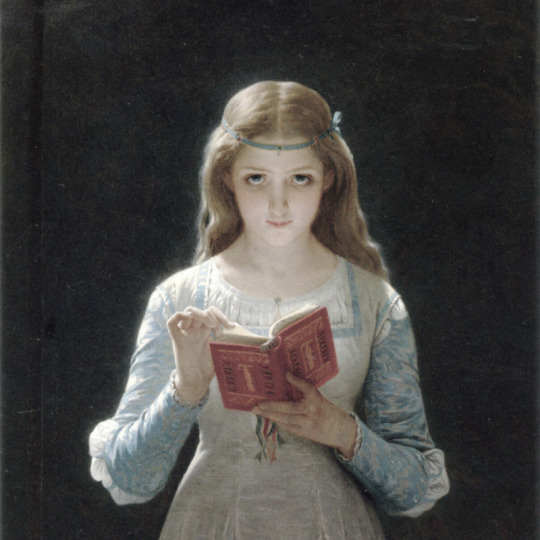
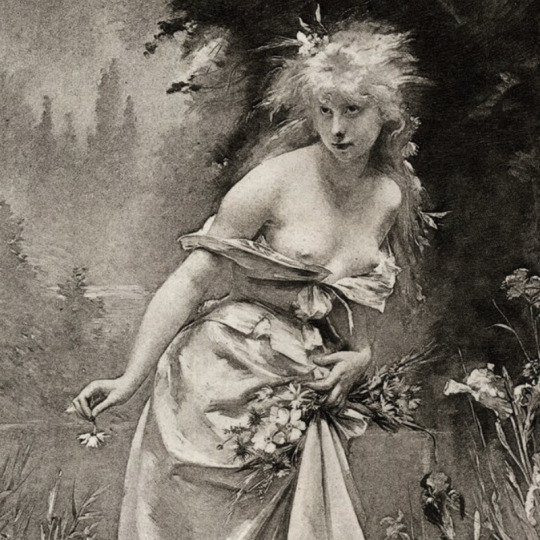



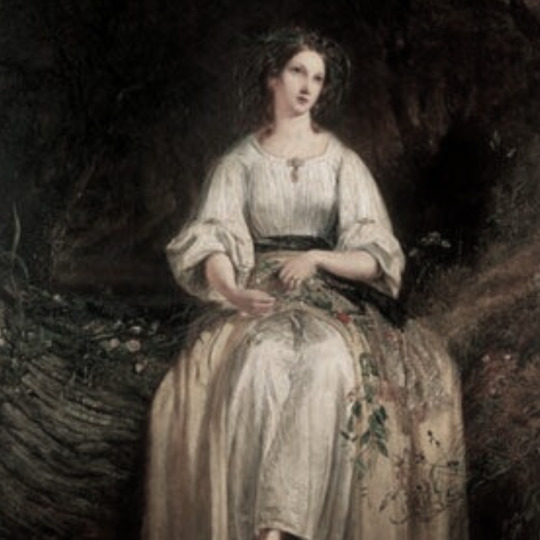


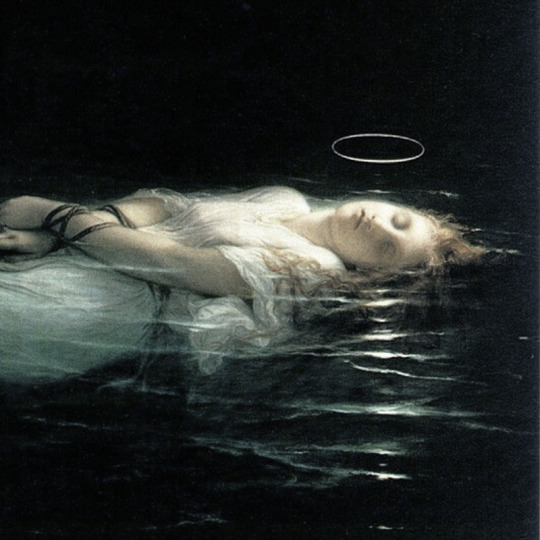
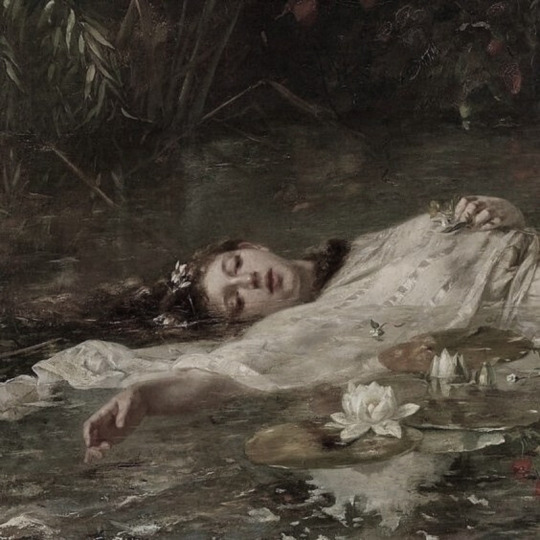

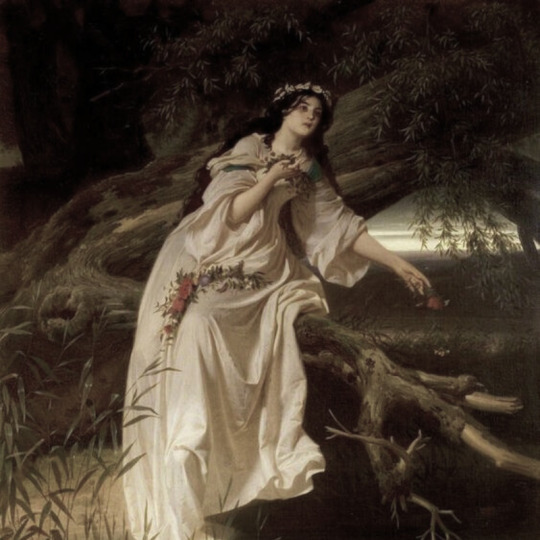
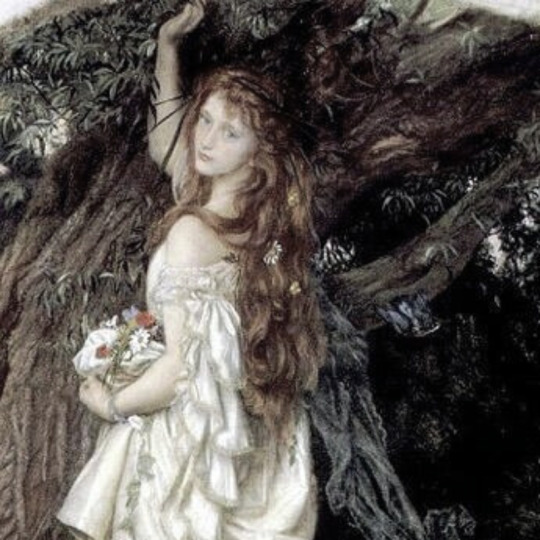
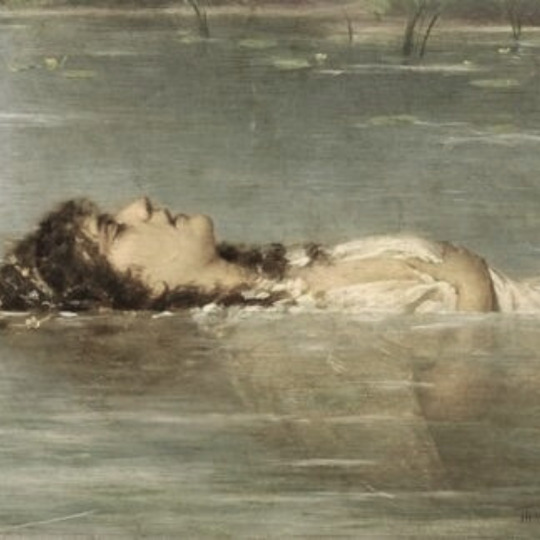
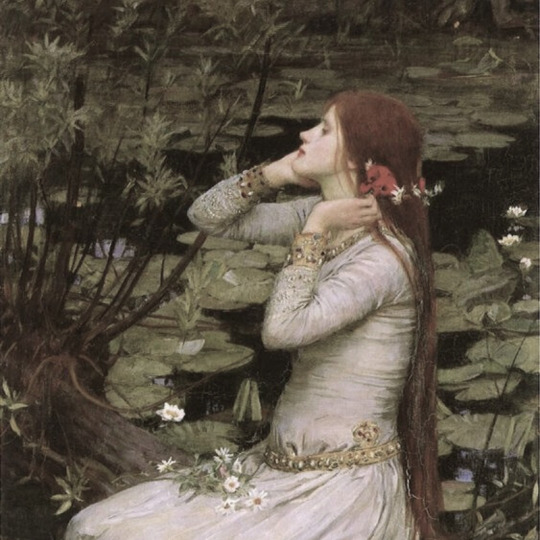

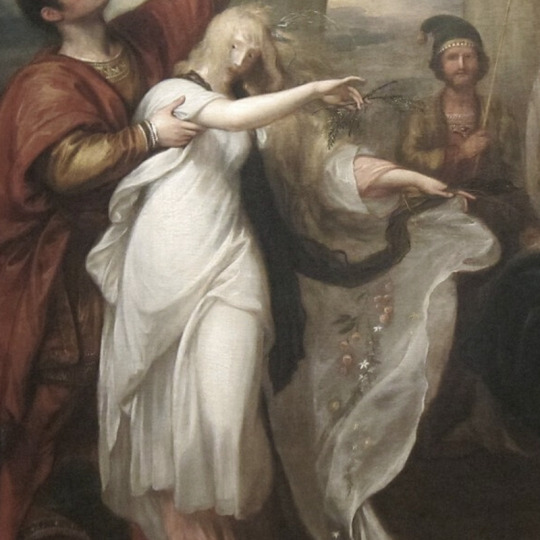



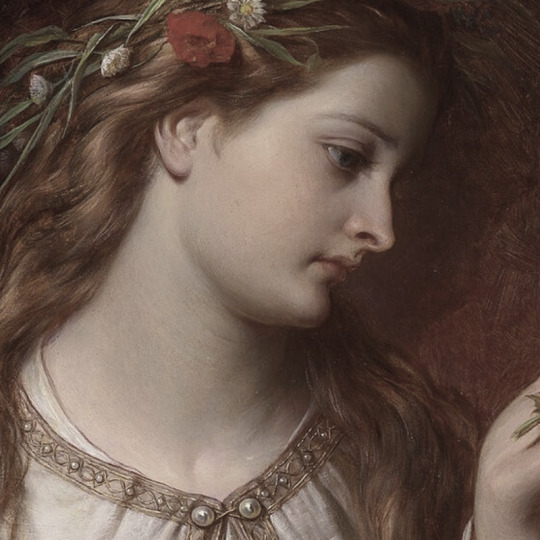
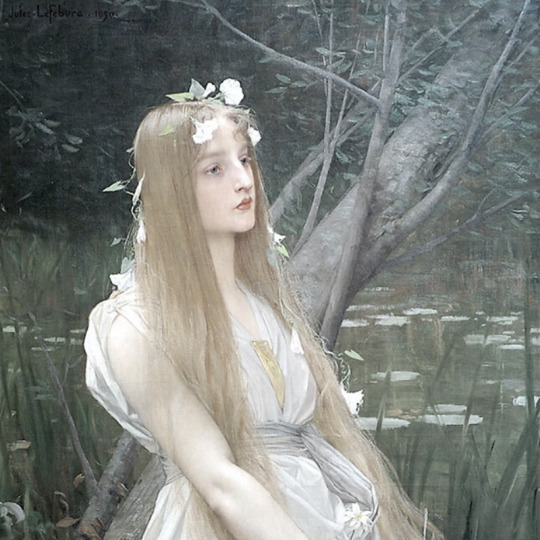
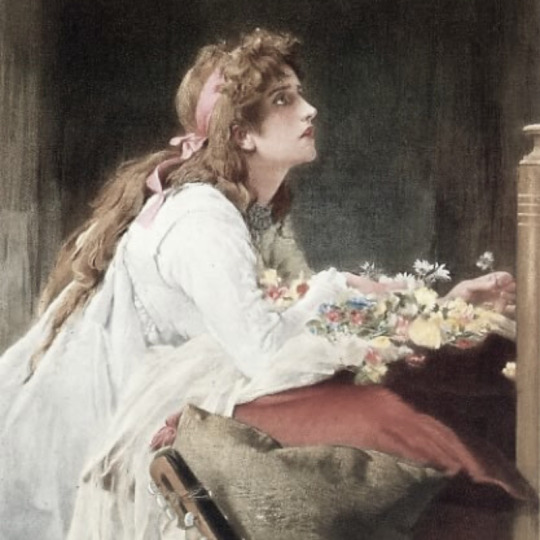

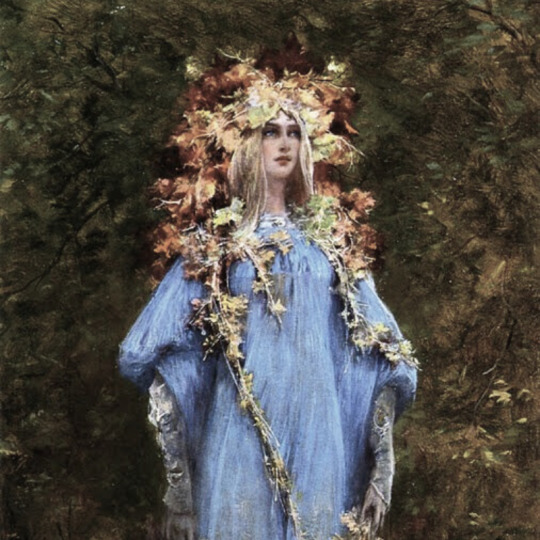
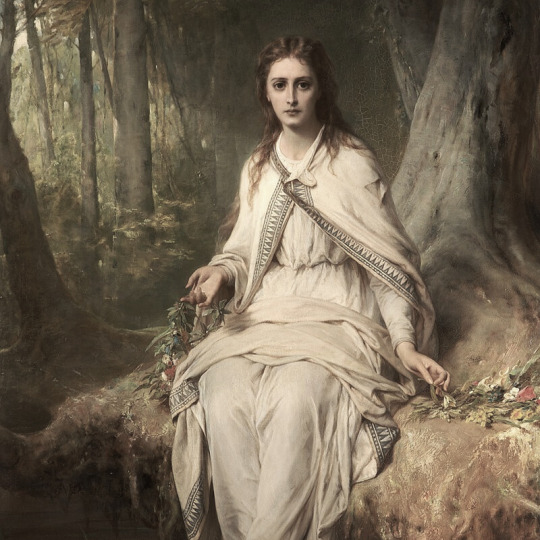
women in art: ophelia
#artist is john everett millais#artist is pierre auguste cot#artist is madeline lemaire#artist is sarah bernhardt#artist is paul albert steck#artist is salvaor dali#artist is richard redgrave#artist is constantin meunier#artist is jules bastien-lepage#artist is paul delaroche#artist is friedrich wilhelm theodor#artist is jeap-baptiste#artist is ferdinand piloty ii#artist is arthur hughes#artist is theodor von der beek#-artist is john william waterhouse#artist is leopold burthe#artist is benjamin west#artist is alexandre cabanel#artist is frances macdonald#--artist is arthur hughes#artist is thomas francis dicksee#artist is joseph jules lefebvre#artist is marcus stone#artist is konstantin makovsky#artist is georges clarin#artist is thomas francis dicksee-#art history#ophelia#hamlet
2K notes
·
View notes
Text

Frances Macdonald (1873-1921), 'Ill Omen', 1893
Source
103 notes
·
View notes
Text
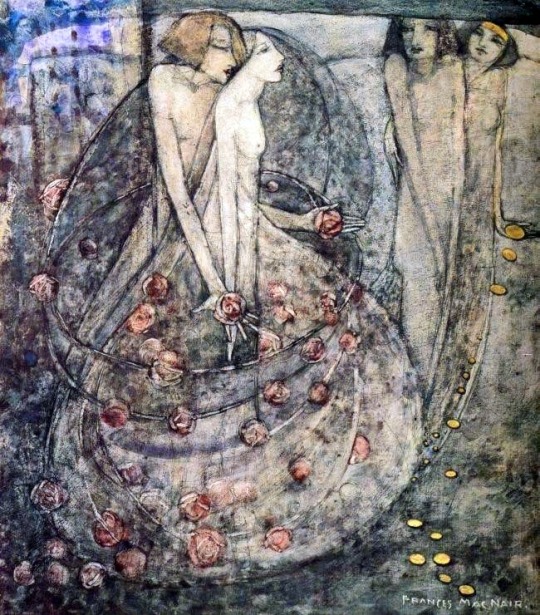
The Choice
Illustration by Frances MacDonald
ca. 1909
#Frances Macdonald#art#artist#illustration#painting#The Choice#Illustration by Frances Macdonald#art nouveau#Frances MacDonald MacNair
69 notes
·
View notes
Text

Frances Macdonald MacNair
Bows
ca. 1910
#Frances Macdonald McNair#art nouveau#british art nouveau#british painter#scottish artist#scottish painter#women artists#woman painter#woman artist#modern art#art history#aesthetictumblr#tumblraesthetic#tumblrpic#tumblrpictures#tumblr art#tumblrstyle#aesthetic#artists on tumblr#tumblrposts#beauty#beautiful
23 notes
·
View notes
Photo
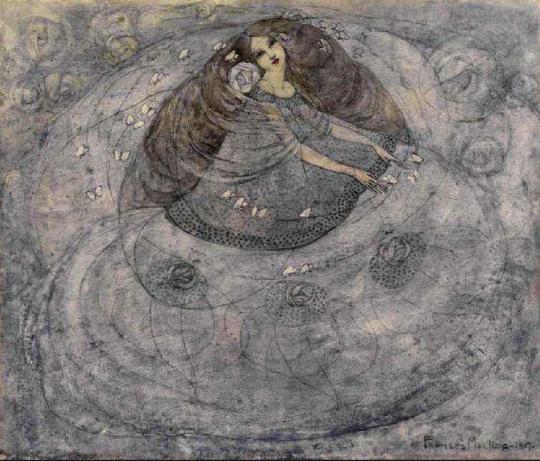
Frances Macdonald MacNair, Girl and Butterflies, 1907
#Frances Macdonald MacNair#Frances Macdonald#art#womens art#art history#painting#women in art#20th century art#1900s#Glasgow Style#Women Artists
34 notes
·
View notes
Text
#I'd love them all because these are my favorite fairytale/children's illustrators#I think Jill Barklem's intricate art of food would have been perfect for the House Elves working in the kitchens and the Burrow#but I think I'm going to have to go with Arthur Rackham overall#harry potter#poll#polls#l
30 notes
·
View notes
Text

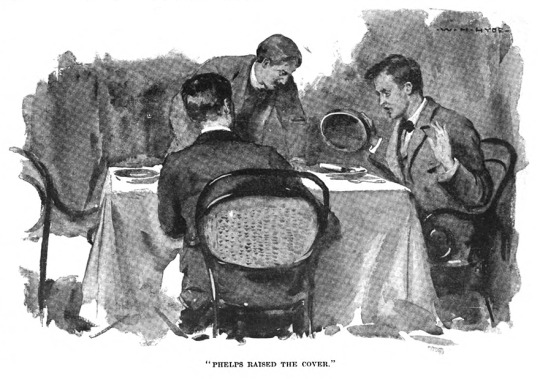


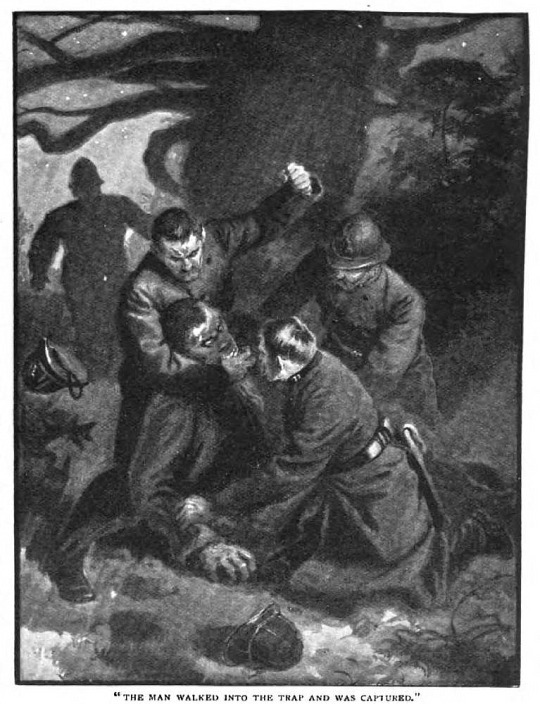

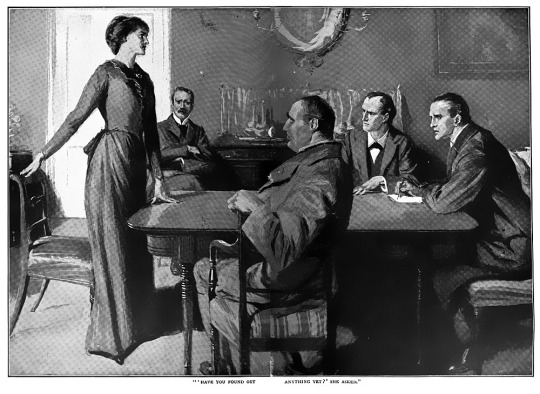

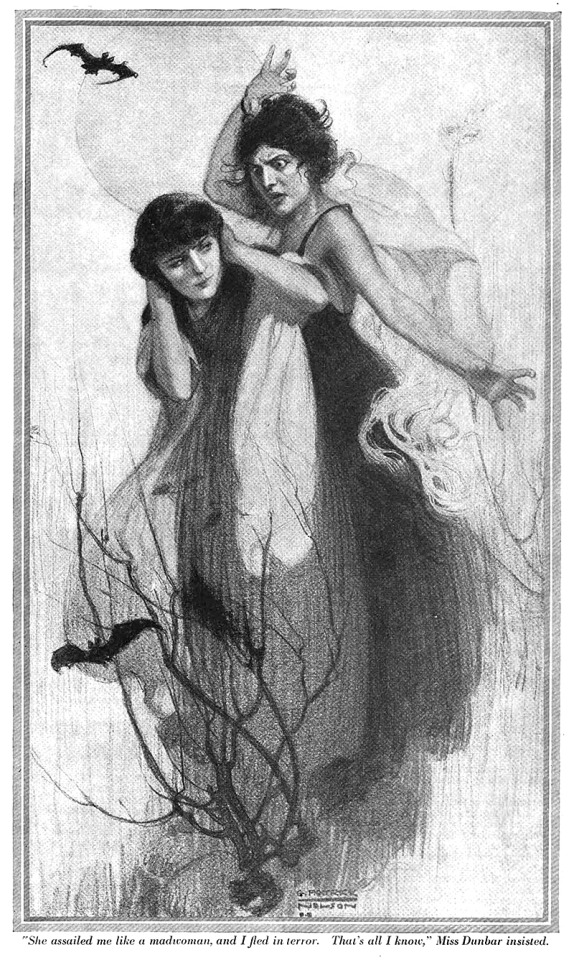



Vote for your favourite, the top 9 will proceed in the bracket. Since theyre all different shapes and sizes, make sure to click into the full views!
Paget Eliminations // Other Artist Eliminations
Full captions and details for each illustration below the cut:
"The single grim motionless figure which lay stretched across the boards" Charles Doyle, Study in Scarlet (1888 Ward, Lock, & Co. Novel)
Characters: Gregson, Holmes, Lestrade, Drebber
"Phelps raised the cover." WH Hyde, Naval Treaty (Harper’s Weekly)
Characters: Holmes, Watson, Percy Phelps
Collier’s Cover FD Steele, Solitary Cyclist (Collier’s)
Characters: Holmes
"The Professor was seated by the fire." FD Steele, Golden Pince-Nez(Collier’s)
Characters: Prof Coram
"The man walked into the trap and was captured." Arthur Twidle, Wisteria Lodge (The Strand)
Characters: Garcia's Cook, Police
"He spent his day upon a lounge-chair on the veranda, with an attendant Lady upon either side of him." Alec Ball, Lady Frances Carfax (The Strand)
Characters: Schlessinger, two women
"Have you found out anything yet?" she asked." Frank Wiles, Valley of Fear (The Strand)
Characters: Mrs Douglas, Watson, White Mason, Holmes, MacDonald
"Not a sound, for your lives!" Arthur Keller, Valley of Fear (1915 US Novel)
Characters: McMurdo/Douglas, Scowrers
"She assailed me like a madwoman, and I fled in terror. That's all I know," Miss Dunbar insisted." GP Nelson, Thor Bridge (Hearst’s International)
Characters: Grace Dunbar, Maria Gibson
"Well, we shall be round about six." HK Elcock, Three Garridebs (The Strand)
Characters: Holmes
"There was a crack in the shutter so that I could see inside the room." FD Steele, Blanched Soldier (Liberty)
Characters: James Dodd
"That is Leonardo," she said." FD Steele, Veiled Lodger (Liberty)
Characters: Holmes, Watson, Eugenia Ronder
12 notes
·
View notes
Note
Who are some of your biggest influences in your art?
I’ve answered this question or something like it a couple times (1 2 3 4 + archive of interviews I’ve done with people) so I’ll hit the main points and then talk about some different stuff I’ve been into recently.
Favorite artists who have influenced me the most in no particular order:
Wayne Barlowe
Moebius
Mark Schultz
Simon Roy
Cosimo Galluzi
CM Kosemen
John Howe
James Gurney
Katsuya Terada
Hayao Miyazaki
I could name more, but those are the main people that I come back to, year after year.
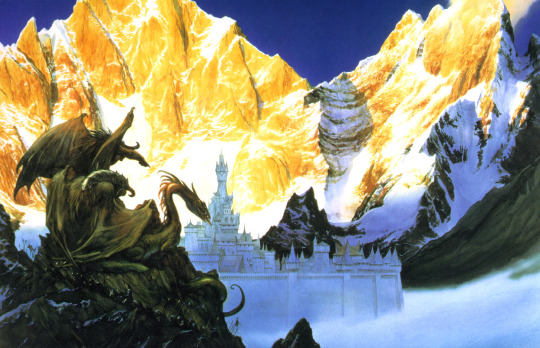
Picture above by John Howe
General art movements/styles that have influenced me
19th century academic art, especially Orientalist painters (to be clear, I don’t endorse any of the harmful racial attitudes behind many of them, it’s just stuff that I saw as a kid that I thought looked cool and different and mysterious)
Ukiyo-e, Shin Hanga, Japanese woodcuts generally
Late 80s to 90s anime
Most comic art
Online spec bio art communities
Video game character/creature designs: Sonic, Pokemon, Legend of Zelda, Shining Force, etc
Art Nouveau
Fuck it, basically all Gilded Age, Fin de siècle, Belle Époque, late 19th/early 20th century European art movements that were more or less representational or illustrative

Picture above by Ludwig Deutsch. I had a bookmark of this painting for many years and I would often get distracted while reading and just stare at it.
I think I’ve talked about all that stuff before but if you want more details or specifics just ask!
For the last couple years, my really big influences have all been other artists I’ve met online. I mean I made a whole book with @ordheist and @bagb0ss. There’s a sort of loose cloud of (mostly) SFF artists that I’ve been really lucky to work and speak with and we all kinda know or know of each other or end up in the same Discord servers, or working on the same RPGs, etc. I’m not gonna link everybody but if you go through the interviews I’ve conducted for my newsletter or check out my side blog you’ll start to figure out who I mean (seriously a lot of these people are coming to tumblr now from twitter and I’ve been reblogging the hell out of them.) Seeing all the stuff my peers are putting out and talking with them is the source of like 90% of the ideas for my personal illustrations these days. It’s cool to be part of a community. I wish there were more opportunities to meet in person, but it’s still cool.
The other stuff that’s really been in my head lately is art that’s less illustrative, more abstract and graphical. Not pure abstraction mind you, but I’ve really been digging stuff that’s more about communicating a concept, feeling, piece of information, or idea than a narrative. More about design and composition than rendering. I recently read Philip Meggs’ History of Graphic Design and that’s turned me on to so new many artists and styles. In particular I’ve fallen in love with all the Vienna Secession guys, the Glasgow Style artists, and all the graphic and bookmaking ideas that came out of the Arts and Crafts movement. I don’t know how I want to work these ideas into my drawings yet and I haven’t had a lot of time to experiment lately but they're definitely bouncing around in my head.


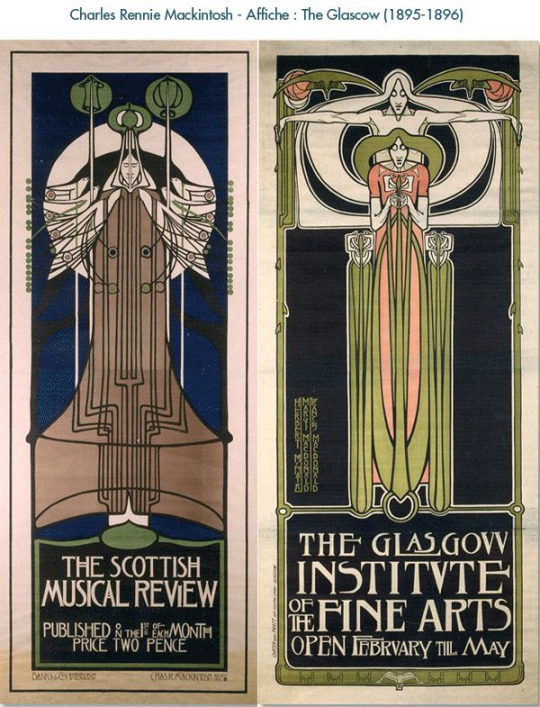

Above from top to bottom: two pieces by Koloman Moser, two posters by Frances Macdonald, and two pages from The Glittering Plain, written and designed by William Morris.
There’s a whole lot of art that I really love but it rarely gets reflected in my drawings- American Regionalist paintings, gig posters, childrens’ storybooks, Eastern European Mosaics, Native American art, outsider art, colonial Americana …. One day I’ll find a way to synthesize it all.
Anyway, hope this is interesting/fun/informative and if you have any follow up questions don’t hesitate to ask!
-Logan
#art nouveau#illustration art#vienna secession#arts and crafts movement#glasgow style#send me an ask!
68 notes
·
View notes
Text

La Mort Parfumee/The Perfumed Death (1921)
by Margaret MacDonald Mackintosh
𓆸 watercolour
𓆸 one of Margaret MacDonald Mackintosh's last works
𓆸 influenced by Egyptian art and burial rituals
𓆸 characterised by abstraction of composition
𓆸 characterised by mannerist representation of the human form
𓆸 harmoniously combines sinuous and straight lines
𓆸 large dark areas are balanced by greys and pastel shades, giving the painting a delicate yet bold appearance
𓆸 the painting has a dreamlike quality to it; death is not depicted as completely terrifying, but rather akin to a slow descent into sleep or as a resignation, somewhat alluring, though not devoid of gloom

❉ Margaret MacDonald Mackintosh was a leading exponent of the "Glasgow style", the Scottish manifestation of Art Nouveau¹
❉ She worked in collaboration with Frances MacDonald McNair (her sister), Charles Rennie Mankintosh (her husband) and James Herbert McNair (her brother-in-law). They were known as "The Four".
❉ Part of the "Glasgow Girls"²
❉ Her mediums of choice were watercolours, beaten metal, textiles and gesso³
❉ Her work is stylised and decorative
❉ She did not use sketchbooks very often, which probably means that her art is made from imagination rather than from direct observation
❉ Some of her influences are folklore, poetry, the Bible, symbolism, Celtic myths and the work of Aubrey Beardsley
❉ Though overshadowed by her husband, her art is no less innovative and remarkable
¹Art Nouveau is a period of Art History between 1890 and 1914 which tried to bridge the gap between the fine arts and the decorative arts. It was influenced by William Morris's Arts and Crafts Movement and is connected to the scientific advancements of the era and to the bourgeois desire for modernisation.
²The "Glasgow Girls" were a group of young women artists and designers active during late XIXth and early XXth centuries. Though they pursued diferrent styles, these women were connected by their shared experiences and by the support they gave one another.
³Gesso = Gesso, pronounced 'jesso', was traditionally used to prepare or prime a surface so Oil paint would adhere to it. Gesso is the same as a primer, as in 'pre-primed canvas'. It is made from a combination of paint pigment, chalk and binder.
Sources
https://www.mackintosh-architecture.gla.ac.uk/catalogue/name/?nid=MMM
https://www.willowtearoomstrust.org/margaret-macdonald-mackintosh-life
http://museu.ms/collection/object/151316/la-mort-parfumee-1921?pUnitId=6677
https://www.nationalgalleries.org/art-and-artists/glossary-terms/glasgow-girls
https://willkempartschool.com/how-to-prime-a-canvas-with-gesso-for-an-acrylic-painting/
Dark/Masculine—Light/Feminine: How Charles Rennie Mackintosh and Margaret MacDonald Changed Glasgow School of Art, María Teresa González Mínguez
Image source - Wikipedia
3 notes
·
View notes
Photo
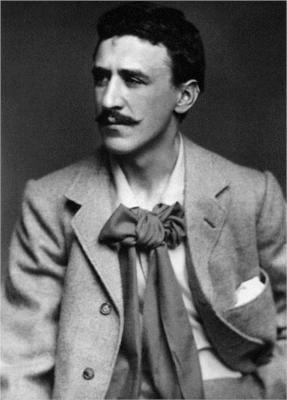




The Scottish architect and designer Charles Rennie Mackintosh died on Monday 10th December 1928, with a pencil in his hand.
As the visionary architect responsible for its re-design and re-build, Mackintosh not only transformed The Glasgow School of Art into world-renowned academy, but also put Scotland firmly on the map as a center of creativity and hub for art and design.
Charles Rennie Mackintosh was born in Glasgow on 7th June 1868, the 4th child of a policeman, William, and his wife, Margaret Rennie. There were eventually 11 children born to the couple, though 4 of them died whilst still young. He was born with a contracted sinew in one foot, which made him limp as he grew older.
He first went to school at the age of 7 and after 2 years transferred to a private school for the children of artisans. He seems to have been fairly poor at traditional ‘reading, writing and arithmetic’, and suffered from dyslexia, leading to poor spelling, for which he became known in later life. He is thought however to have been good at art from an early stage.
While generally associated with the art nouveau style, Mackintosh rejected such comparisons and did not feel part of the 19th-century art nouveau European style represented by Guimard, Horta, van der Velde, or Gaudi, and little of their sinuous "whiplash" curvilinear expression is to be seen in Mackintosh's work. He sought to unite natural forms, especially those deriving from plants and flowers, with a new architectural and design vocabulary that set him well apart from the mainstream of architects who looked to Greece, Rome, and Egypt for inspiration from the antique. His marriage to a talented artist-designer, Margaret Macdonald (1864-1933), and the marriage of her sister, Frances, to Mackintosh's close friend Herbert McNair led to the formation of a brilliantly creative group, clearly led by Mackintosh, known variously as "The Four" or "The Spook School."
Considerable attention was focussed on the work of Mackintosh and the "Glasgow Style" artists and designers who had come from the School of Art. In 1900 Mackintosh and his friends were invited to create a room complete with furnishings at the Vienna Secession exhibition. This created huge interest, and the Mackintoshes were lionized when they went to Vienna. Their exhibition display had a direct influence on the development of the Wiener Werkstatte formed shortly thereafter by Josef Hoffmann. Hoffmann and Mackintosh were close friends, and Hoffmann visited Glasgow twice to see Mackintosh's work, as did the influential critic Hermann Muthesius and the Werkstatte's patron, Fritz Wärndorfer. "The Four" exhibited widely in Europe, both together and individually, and Mackintosh received commissions for furniture from patrons in Berlin, Vienna, and elsewhere in Europe.
In Glasgow Mackintosh's greatest public exposure was through the creation of a number of restaurants, the tea rooms of his most enduring patron, Kate Cranston. The tea rooms provided a wonderful opportunity for Mackintosh to put into practice his belief that the architect was responsible for every aspect of the commissioned work. At The Willow Tea Room (1903) he converted an existing interior into a remarkable dramatic and elegant series of contrasting interiors with furniture, carpet, wall decor, light fittings, menu, flower vases, cutlery, and waitresses' wear all designed by Mackintosh to create a harmonious whole, implementing the idea of totally integrated art-architecture. It is said that Mackintosh used to go to the Room de Luxe at The Willow just before it opened for morning coffee to arrange the flowers and ensure the perfection of his creation!
Surprisingly, despite Mackintosh's fame in Europe and the numerous articles in, for example, The Studio magazine devoted to his work, he never became a dominant force in Glasgow architecture. He created the private house Windyhill in 1901, a number of tea rooms, many works of decorative art and furniture, and other architectural conversions but never had the opportunity to create a second masterpiece after the School of Art and in the manner of Hoffmann's success with the Palais Stoclet in Brussels (1905) which owes so much to Mackintosh's influence. The dramatic designs for the huge International Exhibition in Glasgow in 1901 were rejected as too radical, and his entries for other competitions—for example, Liverpool Cathedral—were unsuccessful. His direct influence on European architecture came not by examples but by suggestions, notably the distribution of a full-color lithographic portfolio of "Designs for the House of an Art-Lover", which was never built.
The Hill House of 1902 is the best example of Mackintosh's domestic architectural style and interior and has survived virtually intact. The Mackintoshes' own house, complete with its furnishings, has been brilliantly recreated at the Hunterian Art Gallery, University of Glasgow , while his Glasgow School of Art has undergone extensive restoration of its interiors and collection
Mackintosh left Glasgow in 1915 for reasons never exactly clear but associated with a notable lack of commissions and the general building slump occasioned by the onset of World War I. He moved to England and journeyed to France and created a sumptuous series of watercolors of the landscape and flowers. Opportunities for a stylized series of flower forms to become widely-distributed printed textiles failed to materialize.
The famous flowing white-on-white interiors of the Glasgow period were replaced by geometric black-on-black interiors which clearly anticipated Art Deco in his final architectural commissions: 78 Derngate, Northampton, England, in 1915/1916, and the "Dug-Out" additions to the Willow Tea Room in Glasgow.
Mackintosh was a visionary designer and architect who had a professional influence on the development of the Modern movement. Although prolific during the height of his most creative years, 1896-1916, much of his work has been lost and the remainder is essentially confined to the city of Glasgow and surrounding region. Although completely neglected and largely ignored in the middle decades of this century, he has now been the subject of intense scrutiny and rediscovery.
His furniture and textile designs are being produced with notable success, and in 1979 a writing desk he designed in 1901 for his own use reached the then world record price paid at auction for any piece of 20th-century furniture, £89,200.
Now much admired and copied, he is seen as a central figure in the development of integrated art-architecture at the turn of the century and a seminal influence on many architects and designers of the Post Modern movement in the 1970s and 1980s.
Charles Rennie Mackintosh died in distressed circumstances in London on this day in 1928. Mackintosh sadly lost his power of speech and reportedly died holding a pencil in his hand
. . There was a small ceremony at Golders Green crematorium, and while there was no notice in the Scottish press, The Times of London did appropriately acknowledge that "the whole modern movement in Europe looks to him as one of its chief originators."
An obituary did howver appear in the Glasgow Herald on December 15, it was a sloppy peice, they couldn’t even get where he passed away correct, nor the age of Mackintosh, but it does give an insight into the contemporary view of his talent.
20 notes
·
View notes
Text
Enemies Defeated (Proles of France, Israel, and Britain)
Rory Ahlquist: Rabbinical Agnew, Japanese ninjitsu, beekeepers; the Angiulo investment, the US Navy plying Rabbinical vendor's trades out of sportswriter's unions.
Alice Charlebois: A Bogota garments syndicate assassin, having turned to Likud Israel, having been bribed with commerce from the "Harry Potter" books, of whom I have been featured as Harry Potter, a homosexual child molester, a Rabbi or any such other membership in a Rotary Lodge, a fraternal cocaine dealer; Albert Einstein's organization, the Nation-State of Israel; faced by my grandfather, Allen Dulles, under assumed alias; actually Radu Thorne, a Stuka Ju 57 pilot, a Junker's divebomber, having hit Guernica for pleasure alone.
Carlin Sarkesian: The Yeltsin arms combine, weapons caches for Jewish children, adopting to the gay identity, to shoot up "Christians", men and women rejecting them for sexual coitus, having expected a pickup artists' book to be the answer to impregnating a woman, instead of "mutual masturbation", fetish sex, the alternative to abstinence demands of some Parishes; rape, given copulation, a Promenades dance; controlled by Canadian Intelligence, the poorly appraised society that never happened.
Philip Enfield: Alias, "Alex Fleming", "Flem", or "Misery", locked up at outside call to police; the Insane Clown Posse, Fight Club, MTV, and Ronald Reagan, revealed to be a work of the Charlebois family, "Hitler Doesn't Smoke", Adolf Hitler's campaign against cigarettes in 1931, to win him Reichstag's Assembly, in Chancellorship of Germany, and later, America, through universities, the University President changed to title of "Chancellor".
Nicholas Maynard: Placed in a permanent fugue state, as a female transexual Bourbon, upon rooming, triggered schizophreniform break, for three and a half hours; blue lotus, a potent Japanese drug, to take a car accident driver down from "shabu", ice, methamphetamine, used by MI-6 and SIS operatives on Asian highways to compensate for the rigid driving machinas needed in the United States, not used in Asia, for far safer roads; outside of the gay rights movements, of those "queer", pedophiles, those seeking sex tourism, instead of their own local prostitutes; those women of influence, law and medical degrees, seeking gigalo, a man into the same trade as them, "homophobes", the heterosexual variety of man grown so rare after Lutheran anti-Semites of Holocaust's ilk, have prohibited Zen; stock broker's numbers, no less, refusing peanut butter, a common child molester thinking his allergy from refusing chocolate, is an actual dietary impediment.
Richard Coughlin: A Hitler Youth, the British fire marshal; the kin of JK Rowling, and through her, Hitler and CS Lewis and Arthur C. Clarke. Guilty of placing a banking derivative, "tools have their uses", to confuse India and DC Comics, the FBI investment, for both, on sales to Berkshire Hathaway, an enemy firm out of the British North Irish, the Arab-Fenian Guilds of Boston and holders of Canada, beneath their Lutheran Sunni grip; not Vatican Zen Arabs, the preferred in New England, particularly our athletes rumored to be of Hispanic or Latino blood.
John Washburne: Alias, "Cusack", remanded to prison sentence, for causing the death of Sandi MacDonald, NSA and Catholic Zen, out of Sudanese Egypt, oppressed by Whitey Bulger's demand of Islam practiced for "Arab" states, his booking and banking numbers. John Washburne, a Queen's Tory, a loyalist, is still in jail, at a military psychiatric ward, being tormented by black prisoners of Arab blood, screaming at him at all hours, for having them converted to Islam, Hitler's religion, as well as Jesus Christ and Muhammad, three cast-outs of utter loathsomeness, the Chilton's family brides.
Saddam Hussein: An MI-6 booking agent, once denied holdership of Israel and Iraq and Iran, by my mother's will alone, instead held as an Arab Olympics sponsor to doom Soviet investments; the Soviets being British intelligence Russians, held as such since Brezhnev, and with Saddam and Yeltsin's defeats, the new Republic of Russia, under Vladimir Putin, separate from the Federal Republic of Germany and the Nobel Prize union of Scandinavia. Put on trial, to prove he was not Gohan, the son of a CIA, Goku; in fact, an MI-6, the entire Dragonball series, an exploration in the myths of the CIA, the slowly acquitted and docile country life, of a Nazi, a Korean Northerner.
Keith Velasquez: Holland "NORML", spray of marijuana, fake or otherwise, with Lysol, Pinesol, Raid, or hairspray; found dead in woods, by Essex County police deputies, tree surgeon appointed to monitor safety of marijuana, sold out of state police tax stamps. Indictment, of Goldman-Sachs, Trump Organization, Saks Fifth Avenue, Nieman Marcus, Macy's, D-Company, Dawood Ibrahim, and Amsterdam Dutch, by lawyers from Gaetano Savings and Loan, Biden's accounts out of the Capone Crime Family; "crime family', indicating service under British Empire goals, out of Westminster Abbey, high value to American intelligence, at potential loss of life threatened from police special forces for interdicting or threatening "crime family" members.
Elizabeth II of Tudor: The agent of George Soros, through Irish Protestants; those Catholics, of Catechism, accepting liturgy instead, and refusing the kneeler, to prevent anal sodomey or the offer of oral pleasure, instead plying their trade as poisoners of meat and practicioners of Pentacost, Purim, and Vigil. Those finding themselves to be in purchase of labor, as if a contract is to be bought on finder's fee, with contract labor guaranteeing loyalty, instead of full control in committee and payment, outside of Ban Ki-Moon's concepts of control of market, the North American Man Boy Love Association (NAMBLA, the British Presbyterians, of Scotland and Korea and Sweden, Asatru as the combined faith's name under Catholic alms).
0 notes
Text

Frances Macdonald (1873-1921), 'The Choice', n.d.
Source
76 notes
·
View notes
Text

Frances Macdonald McNair
Bows, Beads and Birds
#Frances Macdonald McNair#art nouveau#british artists#british art#scottish artist#scottish painter#women artists#woman artist#woman painter#british art nouveau#modern art#art history#aesthetictumblr#tumblraesthetic#tumblrpic#tumblrpictures#tumblr art#tumblrstyle#aesthetic#artists on tumblr#tumblrposts#birds#birds in art#beauty#beautiful
10 notes
·
View notes
Photo
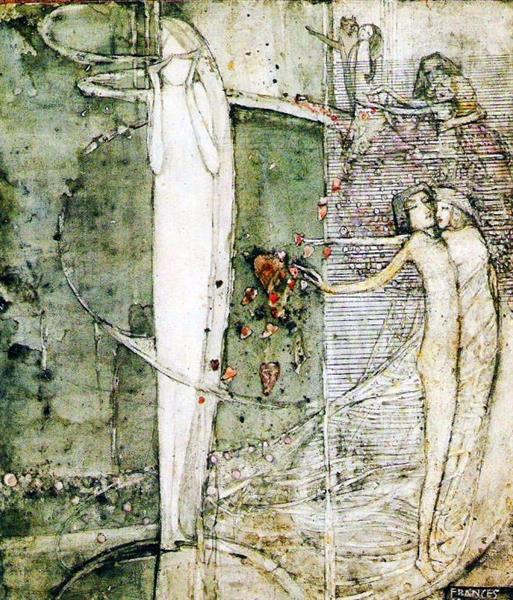
Frances Macdonald MacNair, Sleep, 1910
#Frances Macdonald MacNair#Frances Macdonald#20th century art#art#art history#womens art#Women Artists#Glasgow Style#1910s#women in art
17 notes
·
View notes
Text
January 2024
Club MC Julia welcomed a rather disappointingly small audience to the New Year and our first Club Night of the year in the Royal Hotel, Portree, where the music commenced with Calum MacAskill on accordion and Charlie Oag on drums playing a lively set of marches followed by the waltz, The Gift of Time, composed by the late Jim MacKay.
Making a most welcome return to the Club was Fox Brendon on the Highland Pipes who played the 2/4 marches – Black Mount Forest and Cameronian Quickstep. Fox's 7 year old son, Kiro, then followed his dad on to the stage with his fiddle to play the Tiree Bridle Song. Keeping it in the Brendon family was the next fiddler to perform, 13 year old Leela, who entertained us with a popular selection – Crossing The Minch, My Home and The Centenary Jewel – a lovely selection by an up and coming star.
Following that we had 9 year old Alexander MacKenzie making his debut at the Club when he played Hector The Hero and Flett From Flotta on his piano accordion, followed by a promise that he would be back next month with his fiddle. Club regular, with his old melodeon, Peter Donnghale, was next to give the audience a few tunes including Mrs Macleod of Raasay. An extremely warm welcome was then given on the surprise return of Emily Matheson on accordion who was home on holiday from University and she set everybody's feet tapping with a Dashing White Sergeant taking us up to Guest Artist Time.
The current all Scotland Senior Accordion Champion, Alan Small, then took to the floor with his faithful Hohner Marino 5 and played a selection of Shetland Reels. Alan included an amazing variety of music during the first half including Blair Douglas Waltzes, the Italian Polka Bon Viso and Pipe Jigs culminating in one of his own compositions for a Boston Two Step, The Knickerbox Glories.
Emily started the second half with another much appreciated performance – a mixture of Swedish and Scottish tunes including a lovely selection of Gaelic Waltzes. MC Julia produced her trusty fiddle and her selection ranged from Calum's Road to the the Shetland tune The Unst Bridal Waltz. Peter also returned to the stage to round off the local players with Amazing Grace and an English Reel.
A warm welcome back then to our guest artist Alan Small as he played The Headlands, The Guizer's March and Dr Morrison's Seven Thistles. It was like a world tour as Alan featured music from France, Germany and Canada together with a Jazz feature as well as some brilliant sets of Jigs and Waltzes and finished up with his own version of the Bluebell Polka and a very lively set of Jigs and Reels. It could be seen by the response of the audience that it had been a very enjoyable evening with a fantastic variety of music played in an extremely capable manner most worthy of a Scottish champion.
The next club function will be on Thursday, 1st February 2024 and will feature the Andrew MacDonald Trio from Fort William.
0 notes
Text



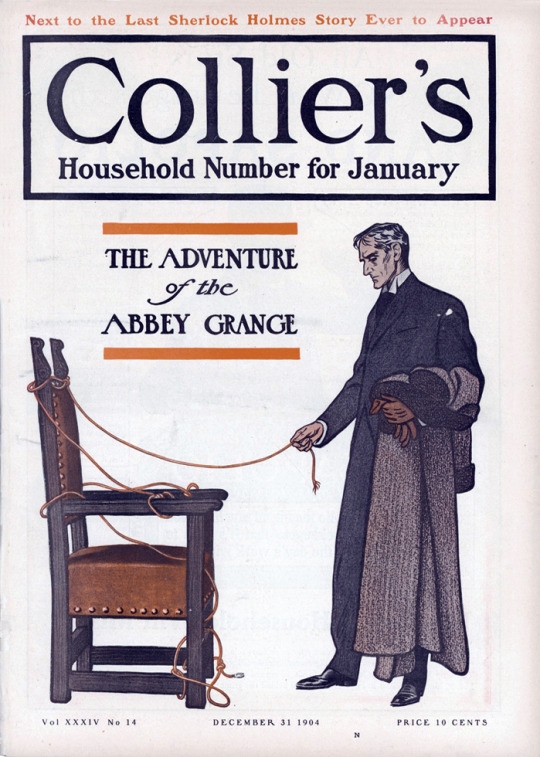

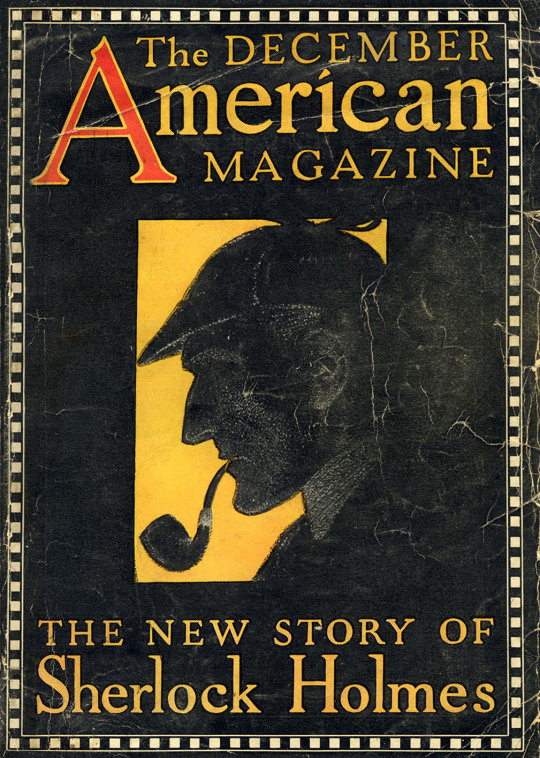


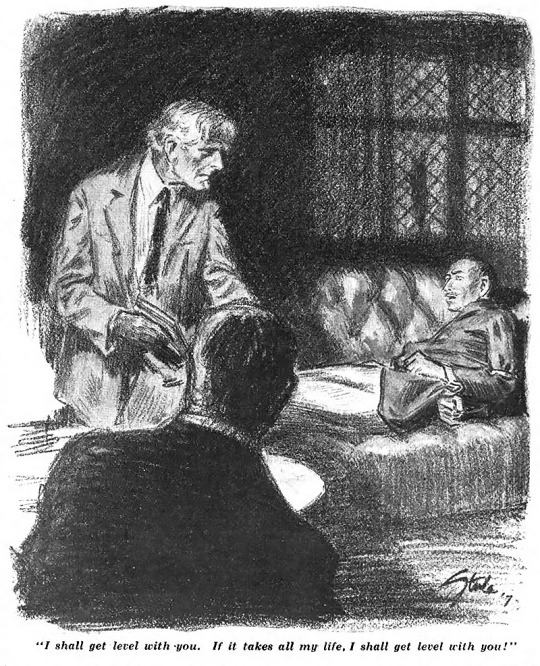



Vote for your favourite, the top 9 will proceed in the bracket. Since theyre all different shapes and sizes, make sure to click into the full views!
Paget Eliminations // Other Artist Eliminations
Full captions and details for each illustration below the cut:
"I shall reward you young sahib, and your governor also, if he will give me the shelter i seek." Herbert Denman, Sign of Four (Lippincott’s)
Characters: Mahomet Singh, Abdullah Khan, Jonathan Small, Achmet (Merchant), Dost Akbar
[Holmes and Watson on the train] Harry C. Edwards, Final Problem (McClure’s)
Characters: Watson, Holmes
"The Duke and his secretary" FD Steele, Priory School (Collier’s)
Characters: Duke of Holdernesse, James Wilder
Collier’s Cover FD Steele, Abbey Grange (Collier’s)
Characters: Holmes
"Do you mean to say that anyone holding these papers, and without the seven others, could construct a Bruce-Partington submarine?" Arthur Twidle, Bruce-Partington Plans (The Strand)
Characters: Draughstman, Holmes, Watson
The American Magazine Cover FD Steele, Lady Frances Carfax (The American Magazine)
Characters: Holmes
[Holmes reaching to make Watson drop the poisoned box] FD Steele, Dying Detective (Collier’s)
Characters: Watson, Holmes
"Then suddenly he hauled something in as a fisherman lands a fish." Frank Wiles, Valley of Fear (The Strand)
Characters: Watson, Holmes, Mason, MacDonald
"I shall get level with you. If it takes all my life, I shall get level with you!" FD Steele, His Last Bow (Collier’s)
Characters: Holmes, Watson, Von Bork
"The Professor's face was convulsed and he grinned and gibbered at us in his senseless rage." HK Elcock, Creeping Man (The Strand)
Characters: Trevor Bennett, Prof Presbury, Holmes, Watson
"I lit my pipe and leaned back in my chair." HK Elcock, Blanched Soldier (The Strand)
Characters: Holmes, James Dodd
"As I slipped the bars it bounded out, and was on me in an instant." Frank Wiles, Veiled Lodger (The Strand)
Characters: Eugenia Ronder, Lion
9 notes
·
View notes